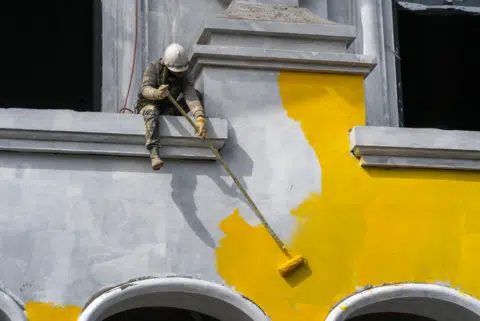5 Common Mistakes To Avoid When Painting Your Home Exterior

Introduction
Painting the exterior of your home can be a rewarding DIY project, but it’s not without its challenges. To ensure a successful outcome, it’s crucial to avoid common mistakes that can lead to a subpar finish or costly repairs down the road. In this article, we’ll delve into the 5 most common mistakes to avoid when painting your home’s exterior, offering expert advice and insights based on years of experience in the field. Let’s get started!
House Painter Service
1. Neglecting Proper Surface Preparation
Before you even think about applying that first coat of paint, surface preparation is key. One of the gravest mistakes homeowners make is neglecting this crucial step. Skipping proper preparation can result in a paint job that doesn’t adhere well and will require frequent touch-ups.
Importance of Surface Preparation
Proper surface preparation involves:
- Cleaning the surface: Remove dirt, dust, mildew, and any loose or peeling paint.
- Repairing defects: Fill cracks, holes, and imperfections with the appropriate fillers.
- Sanding: Smooth out rough areas to ensure an even surface for paint application.
2. Choosing the Wrong Paint
Selecting the right paint is vital for a long-lasting and attractive finish. Many homeowners make the mistake of choosing paint solely based on color preference, ignoring factors like the type of surface and climate conditions.
Types of Exterior Paint
When choosing paint:
- Consider the surface: Different surfaces, such as wood, brick, and stucco, require specific types of paint.
- Factor in the climate: Extreme temperatures and humidity levels can affect paint performance, so choose accordingly.
- Invest in quality: High-quality paint may cost more, but it will save you money in the long run by requiring fewer coats and lasting longer.
3. Skipping Priming
Priming is often overlooked but is a critical step in achieving a professional-looking paint job. It creates a smooth, uniform surface for the paint to adhere to and improves its durability.
Importance of Primer in Painting
Here’s why priming is essential:
- Conceals stains and imperfections: Primer helps hide underlying blemishes on the surface.
- Enhances paint adhesion: It provides a strong bond between the surface and the paint.
- Prevents paint peeling and blistering: Primer acts as a barrier, reducing the chances of moisture damage.
4. Ignoring Proper Safety Measures
Safety should always be a top priority when painting your home’s exterior. Neglecting safety precautions can lead to accidents and injuries that could have been easily prevented.
Safety Tips for Exterior Painting
To stay safe:
- Use proper equipment: Invest in high-quality ladders, scaffolding, and safety harnesses.
- Protect yourself: Wear protective gear, including gloves, safety glasses, and a dust mask.
- Be cautious with lead paint: If your home was built before 1978, test for lead paint and take necessary precautions.
5. Rushing the Job
Impatience can be detrimental to your paint job. Rushing through the process can result in uneven coats, drips, and an overall sloppy appearance.
Importance of Patience in Painting
Remember:
- Take your time: Plan your painting project over a few days to ensure each coat dries properly.
- Apply thin coats: Multiple thin coats are better than one thick coat for a smooth finish.
- Don’t paint in extreme weather: Avoid painting in direct sunlight or on extremely windy days.
Conclusion
Painting your home’s exterior can be a gratifying project when done correctly. By avoiding these common mistakes and following expert advice, you’ll ensure a beautiful and long-lasting finish that enhances your home’s curb appeal. Remember to prioritize safety, invest in quality materials, and take your time to achieve the best results. Happy painting!
Frequently Asked Questions
How long should I wait between coats of paint?
Allow each coat to dry for at least 24 hours before applying the next one. Follow the manufacturer’s instructions for the specific paint you’re using
Can I paint over old paint without stripping it?
Yes, you can, as long as the old paint is in good condition and not peeling or chipping. Clean and prime the surface before applying new paint.
What type of paintbrush or roller should I use?
The choice of brush or roller depends on the surface texture. Use a brush for detailed areas and a roller for large, flat surfaces.
Is it necessary to use a paint sprayer for the best results?
While paint sprayers can provide a smooth finish, they require skill and experience to use correctly. A brush and roller can also yield excellent results if used properly.
Can I paint my home's exterior in cold weather?
It’s not advisable to paint in extremely cold conditions (below 50°F or 10°C), as the paint may not cure properly. Wait for milder weather for the best results.
How can I clean my paintbrushes and rollers after use?
To clean paintbrushes and rollers, use the appropriate solvent (water for latex paint, mineral spirits for oil-based paint) and thoroughly rinse until the water runs clear.





